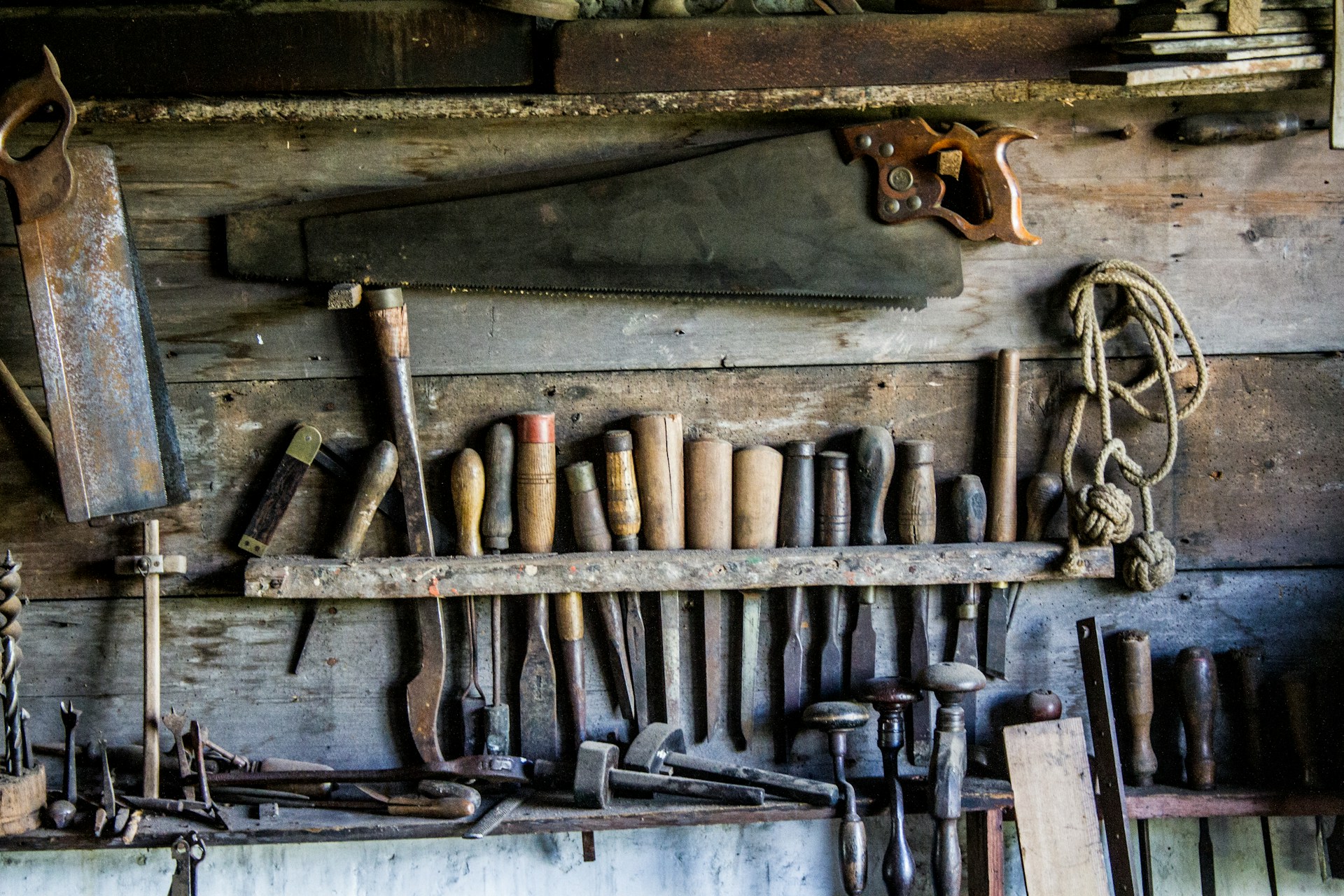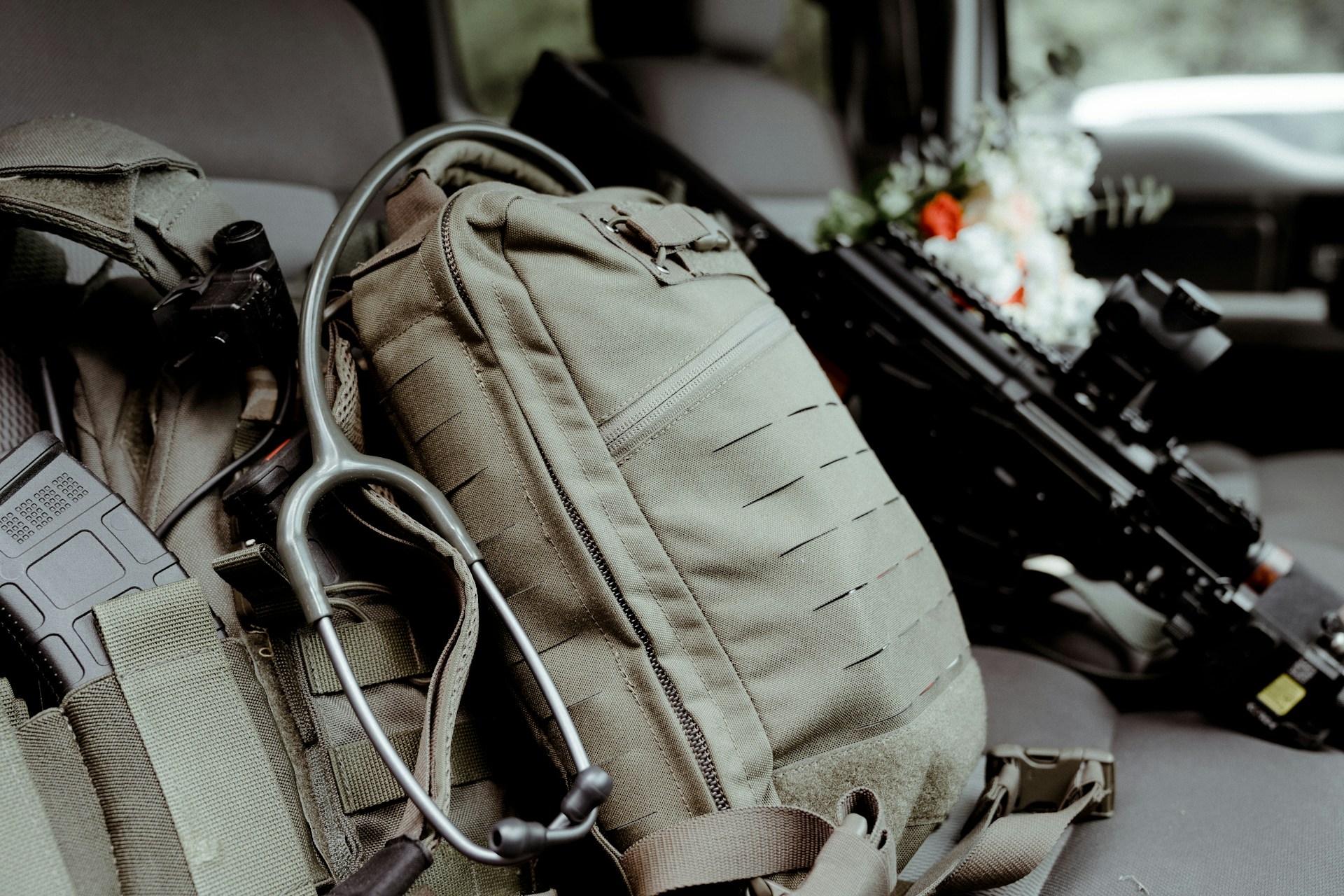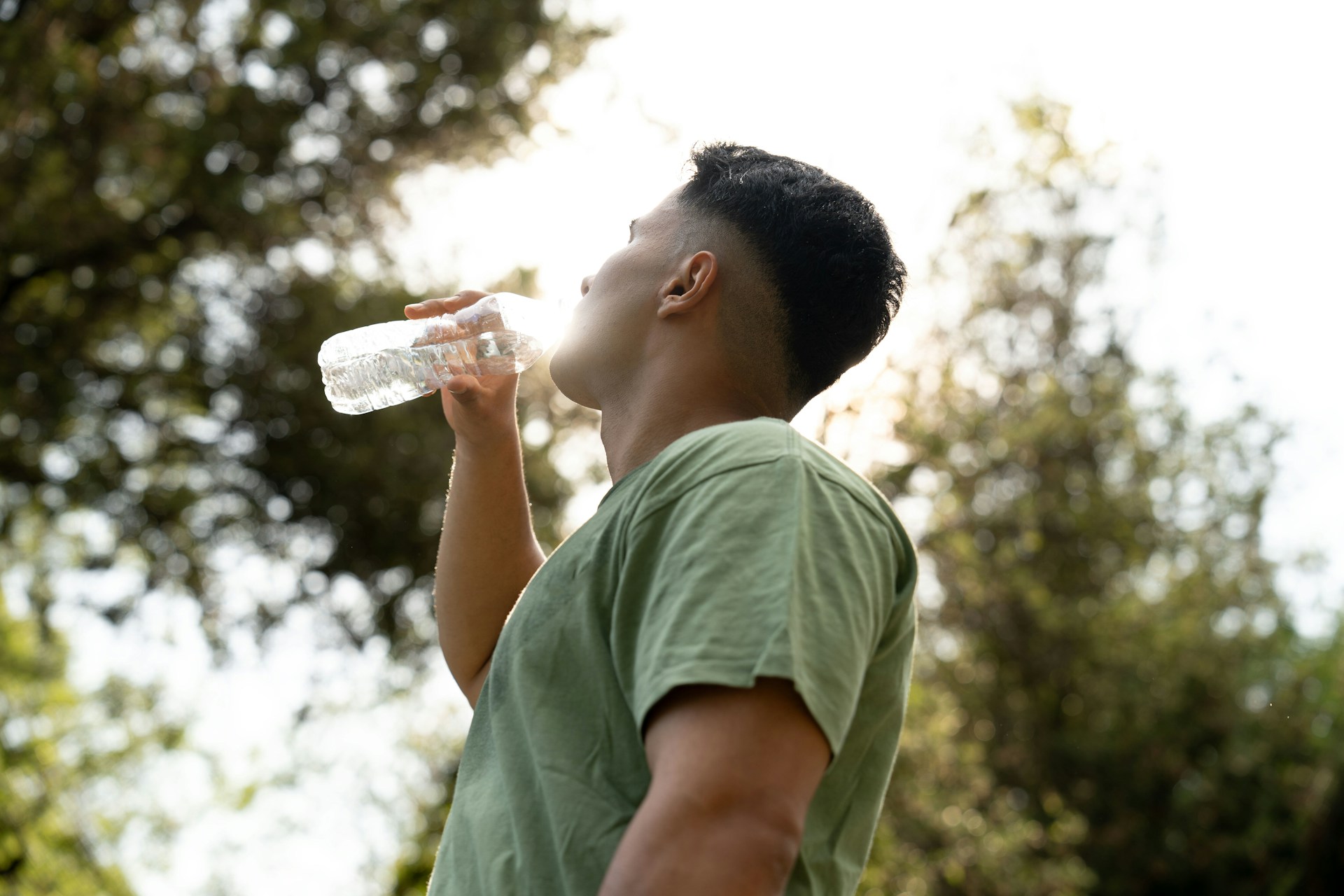Preparedness
Unlock Hidden Survival Tools in Everyday Trash

Reflecting on the past, it’s clear that our ancestors had a knack for repurposing everyday items, a skill that seems to have faded in our modern, convenience-driven society. My grandmother, for instance, was a master at finding new uses for seemingly useless items. Her cabinets were filled with recycled butter tubs and cookie tins, each containing a treasure trove of odds and ends. Even Christmas wrapping paper was never discarded, but carefully folded and reused year after year.
In today’s world, it’s easy to overlook the potential of items we routinely throw away. Yet, many of these discarded objects can be invaluable in emergency situations. Take an old t-shirt, for example. It can be transformed into a life-saving tourniquet. By tearing a strip, folding it for sturdiness, and wrapping it above a wound, you can effectively stop bleeding.
Plastic bottles, though often tossed aside, are another versatile resource. They can store clean water, be used to create solar stills, or even serve as fishing traps. It’s wise to keep a few on hand for these purposes. Similarly, the parts of a broken umbrella shouldn’t be discarded. The metal spokes and fabric can aid in shelter-building, while the handle can double as a makeshift spear or digging tool. The water-resistant fabric is perfect for covering essential gear.
Even items like plastic pool floats, which seem useless once punctured, have their place. They can be repurposed for insulation or cut into strips for waterproof storage bags. With minor repairs, they can still function as flotation devices when partially inflated.
Old newspapers, often treated as waste, serve multiple survival purposes. They’re excellent for fire-starting, insulation, and even as makeshift bandages. Pair these with empty toilet paper or paper towel rolls, stuffed with dryer lint, and you have an effective fire starter. These biodegradable rolls are also great as seed starters.
“Vacuum contents and dryer lint are densely packed and highly flammable,” making them ideal for starting fires. Combine this lint with your cardboard rolls, and you’ll have a reliable fire-starting solution in emergencies.
Crayons, primarily composed of wax, can burn for up to thirty minutes, acting as small candles or fire starters. Even a nearly empty jar of petroleum jelly shouldn’t be thrown away. It serves as a fantastic fire accelerant and can waterproof small matches or create a fire-starting balm when mixed with cotton balls.
Aluminum cans, like those from cream of mushroom soup, are surprisingly useful. In emergencies, they can be used as makeshift cooking pots, alarm systems, or signal mirrors. They can even function as small solar ovens. Similarly, glass jars are invaluable for storing food and water, and can be transformed into small lanterns or emergency fire starters when soaked in alcohol.
Plastic bags are another versatile item. They can be used for waterproofing, collecting water, carrying items, or creating makeshift shelters. Cardboard boxes, often discarded without a second thought, work well for insulation, fire kindling, carrying items, and constructing temporary shelters.
Prescription bottles, once empty, are the perfect size for waterproof containers for matches or tinder. They can also be used to create small emergency fishing kits. Insoles from worn-out shoes can provide added warmth to emergency footwear or gloves, especially in colder conditions.
Old shoelaces are excellent cordage for building shelter, setting traps, or tying things together. Melt down any remaining candles to create waterproof matches or improve kindling. Fragments of broken mirrors can serve as signal mirrors or be used to start fires, but handle them with care to avoid injury.
For those feeling adventurous, try pairing a gum wrapper with a battery to start a fire. It’s a trick worthy of MacGyver himself. Soda tabs can be modified into fishing hooks or used as emergency tools, and they fit perfectly in a prescription bottle fishing kit.
Wine bottles, often seen as mere décor, can be recycled to carry water, signal for help, or heat in the sun for warmth. Old clothes can be repurposed into bandages and tourniquets, charred for fire-starting, or used for makeshift water filtration.
Tin foil is another item with multiple uses. It can act as a reflective signal, insulator, or makeshift frying surface. When electronics break, consider salvaging parts, especially wiring. Copper wiring is particularly useful for traps, fishing lines, or emergency repairs.
Lastly, old lip balm isn’t just for soothing cracked skin. It can also be used as a fire accelerant. Paper clips, with their malleable nature, can be bent into small tools, fishing hooks, or improvised locks.
Before discarding anything, consider its potential uses. As the saying goes, “Consider other uses before you toss anything in the garbage, friends.” You might just find a life-saving tool in what you once thought was trash.
Let us know what you think, please share your thoughts in the comments below.

Preparedness
Discover the Unexpected Joys of Being a Prepper

Reflecting on recent years, it’s clear that being a prepper has offered me a sense of gratitude and peace of mind that many may not experience. The world has faced its fair share of challenges, with disasters—both natural and man-made—making headlines frequently. The rush to stock up on essentials during lockdowns highlighted the importance of being prepared. People scrambled for items like hand sanitizer and toilet paper, leading to a surge in demand for preparedness companies.
This situation underscored a significant advantage of being a prepper: peace of mind. When chaos ensues, knowing that your family is secure and you don’t have to join the frantic crowds is invaluable. Being a prepper means embracing self-reliance in all aspects of life. There’s a unique empowerment in knowing that your family possesses basic survival skills, whether it’s changing a tire, finding water, or starting a fire.
Moreover, preppers have the opportunity to assist others. In a blackout, you might be the only one with a flashlight, or the person with the necessary multi-tool to fix something. Your first aid skills could save a life, and your situational awareness might help avoid danger.
Self-reliance also reduces anxiety and enhances problem-solving skills. While many are familiar with the ‘fight or flight’ response, there’s a third: “Fight, Flight, or Freeze.” Unfortunately, anxiety can cause some to freeze. However, practicing basic skills makes it less likely for preppers to freeze, or if they do, it’s only momentarily.
Living a prepared lifestyle means being less of a burden during crises. If more people were ready for even short durations, there would be fewer store shortages and fewer people needing rescue, allowing faster aid to those truly in need.
Additionally, prepping aligns with environmental consciousness. While I don’t consider myself an environmentalist, I do value a healthy ecosystem. I want clean rivers and lakes for fishing, uncontaminated well water, and a thriving wilderness.
Regardless of when you began your prepping journey, every skill learned and item stored contributes to better preparedness for the future. It’s a lifestyle choice that offers much to be thankful for.
Let us know what you think, please share your thoughts in the comments below.
Preparedness
Ignite the Impossible: Fire-Making Secrets for Rainy Adventures

Mastering the art of fire-making is essential for any outdoor enthusiast, but doing so in the rain requires an elevated skill set. Whether you’re an avid camper or hiker, knowing how to ignite a fire in wet conditions can be crucial. In dire situations, a fire can mean the difference between life and death, offering warmth and the ability to cook food.
The first step in starting a fire in the rain is to gather tinder. Pine needles are an excellent choice because they dry quickly. Alternatively, you can use tree bark, as it often has a dry side. It’s wise to carry your own firestarter for emergencies, but if you find yourself without one, these natural options can be lifesavers.
Next, seek out kindling and fuel wood. Search for dry wood in areas with natural cover, such as beneath a leaning rock, a fallen tree, or the lower branches of an evergreen. To ensure the wood is dry enough, test the kindling by snapping it; it should break easily. For larger branches, split them with a knife to access the dry wood inside.
Once your materials are collected, choose a location for your fire. Underneath a large tree is a good option, or you can create a makeshift shelter by stringing a tarp between trees. This will help shield your fire from the rain.
Creating a bed for your fire is essential to keep it off the wet ground. You can use tree bark or construct a bed from branches. This separation is crucial to prevent moisture from extinguishing your fire.
In wet weather, avoid digging a fire pit, as it can fill with water. Instead, build your fire on a slight mound of earth. This elevation prevents water from pooling and dousing your flames.
“Note that cutting bark from a tree should in fact only be done in an actual emergency, as this can damage and even kill the tree.” This is a vital consideration for anyone practicing survival skills in the wild.
By following these steps, you’ll be better prepared to start a fire in challenging conditions. Remember, preparedness isn’t just a hobby; it’s a way of life.
Let us know what you think, please share your thoughts in the comments below.
Preparedness
Beat the Heat Naturally: Old-School Cool Tips

As temperatures rise during the hottest months, staying comfortable without relying on air conditioning can seem daunting. However, there are several effective strategies to keep cool that have been used long before air conditioning became commonplace.
One of the simplest methods is to air out your home during the cooler evening hours. “In the evening as soon as the outside temperatures have dipped below the temp in the house open up the windows and doors and let the house air out.” If safety allows, consider leaving them open throughout the night to maximize airflow.
When morning comes, it’s crucial to close up the house to trap the cool air inside. Shut all windows and doors and draw the blinds. Incorporating blackout or heat-reflecting curtains can significantly help maintain a cooler indoor environment. Additionally, keeping interior doors to the hottest rooms closed can prevent heat from spreading.
Limiting how often you open doors during the day can also help maintain the cool air within your home. If you need to go in and out, try to use doors on the shady side of the house. This simple step can make a noticeable difference in preserving a cooler atmosphere indoors.
These tips not only help you stay comfortable during the sweltering summer months but also promote a more energy-efficient lifestyle. Whether you’re new to the concept of preparedness or an experienced prepper, these strategies can enhance your ability to manage in extreme weather conditions without relying on modern technology.
Let us know what you think, please share your thoughts in the comments below.
-

 Tactical1 year ago
Tactical1 year ago70-Year-Old Fends Off Intruder with Lead-Powered Message
-

 Tactical1 year ago
Tactical1 year agoVape Shop Employee Confronts Armed Crooks, Sends Them Running
-

 Preparedness11 months ago
Preparedness11 months agoEx-Ballerina’s Guilty Verdict Sends Tremors Through Gun-Owner Community
-

 Preparedness9 months ago
Preparedness9 months agoGood Samaritan Saves Trooper in Harrowing Interstate Confrontation
-

 Tactical1 year ago
Tactical1 year agoMidnight SUV Theft Interrupted by Armed Homeowner’s Retaliation
-

 Survival Stories2 years ago
Survival Stories2 years agoEmily’s 30-Day Experience of Being Stranded on a Desert Island
-

 Preparedness10 months ago
Preparedness10 months agoArizona Engineer’s Headless Body Found in Desert: Friend Charged
-

 Preparedness10 months ago
Preparedness10 months agoBoy Saves Dad from Bear Attack with One Perfect Shot